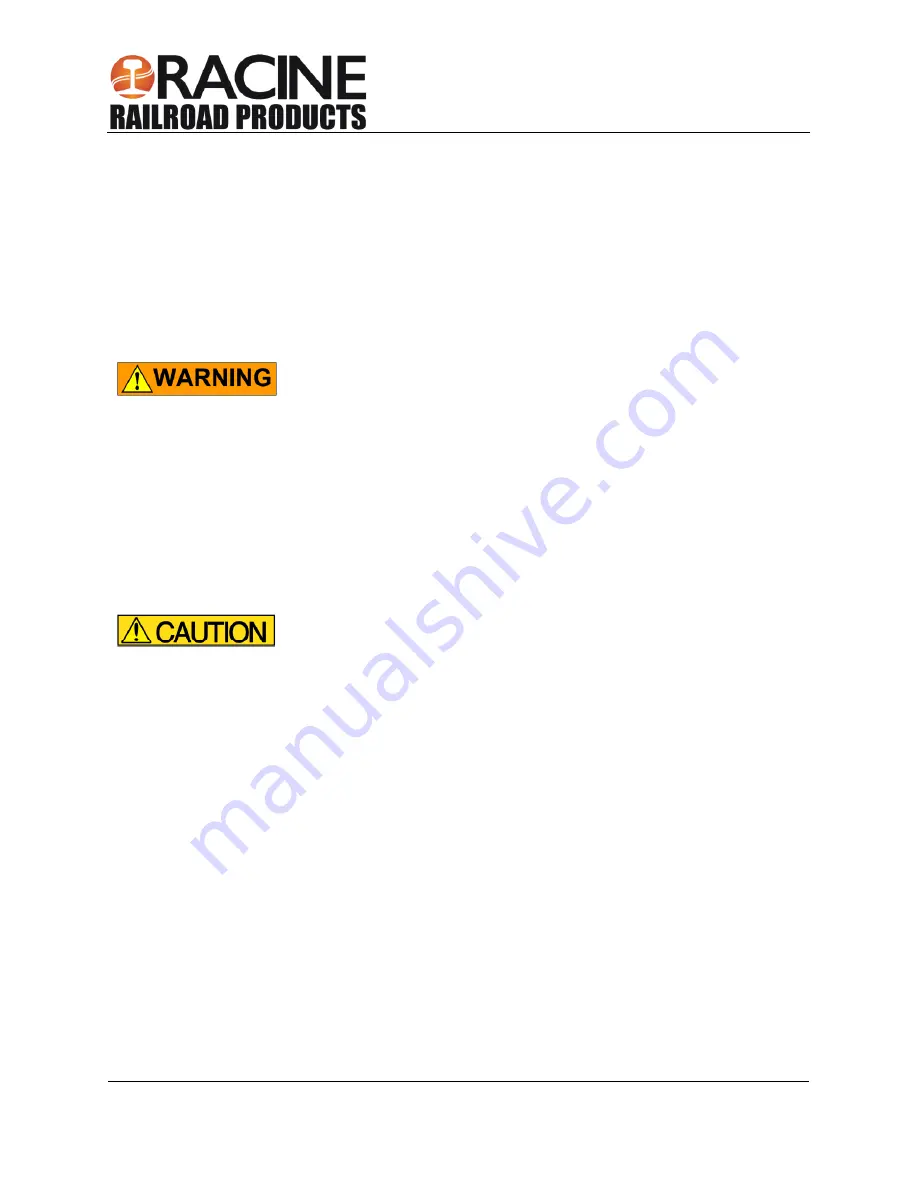
910161
Hydraulic Rail Drill
Phone: (262) 637-9681
Email:
1.2023 Rev 3.1
Original Instructions
Page 17
Operation: Drill Socket / Bit
The Rail Drill operates by automatically supplying fluid in such a way that it turns the drive shaft of the
assembly. As the trigger is depressed, it moves the spool to close off the flow of oil to the return port and
directs the flow of oil through the tool circuit.
The flow of oil through the directional spools causes the shaft to turn and rotate the drive assembly. With
no or minimal resistance, the anvil and hammer turn in unison.
As greater resistance is encountered during use of the drill, the force of the resistance causes the
hammer to slip and strike the anvil resulting in the impact action. The impact action continues until the
resistance is reduced or the work completed.
Rotating parts. Keep all body parts away from rotating parts of the
tool to avoid personal injury
.
1. Inspect the square drive
.
Remove any dirt or other contamination that may have accumulated in
the chuck.
2. Slide desired square drive socket onto drive on the tool or insert the desired bit in quick -change
chuck.
3. Connect the hydraulic hoses from the hydraulic power source to the tool.
4. Start the hydraulic power source. Allow power source to run (idle) for a few minutes to warm
hydraulic reservoir fluid.
5. Set the directional spool to the desired position (forward or reverse).
The torque values listed under specifications are approximate and
dependent on hydraulic oil temperature, fluid condition, pump flow
and many other variables present while using these tools.
To achieve a specified torque, use a calibrated torque wrench.
Failure to follow this instruction may cause an incorrect torque
value in situations requiring a specific torque.
Never change spool direction while the tool is operating. Shifting the spool while the tool is
operating may cause internal tool damage. Always allow the tool to come to a complete stop
before changing direction.
6. Grasp the tool handle. Place your opposite hand on the top of the tool. This will allow leverage to be
applied while operating.
7. To start the tool, squeeze the trigger.
8. To stop the tool, release the trigger.
9. After the tool has stopped rotating completely, lay the tool on a flat stable surface.
10. When the tool is not in use, stop the hydraulic power source flow to reduce exces s heat build-up
and unnecessary wear on tool components.





























